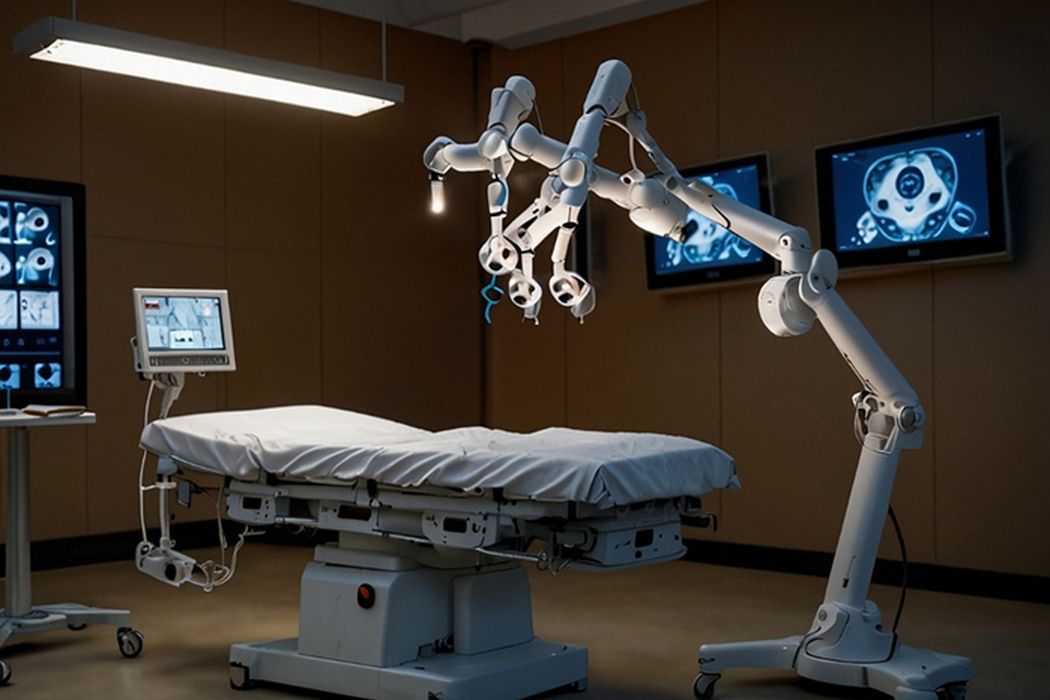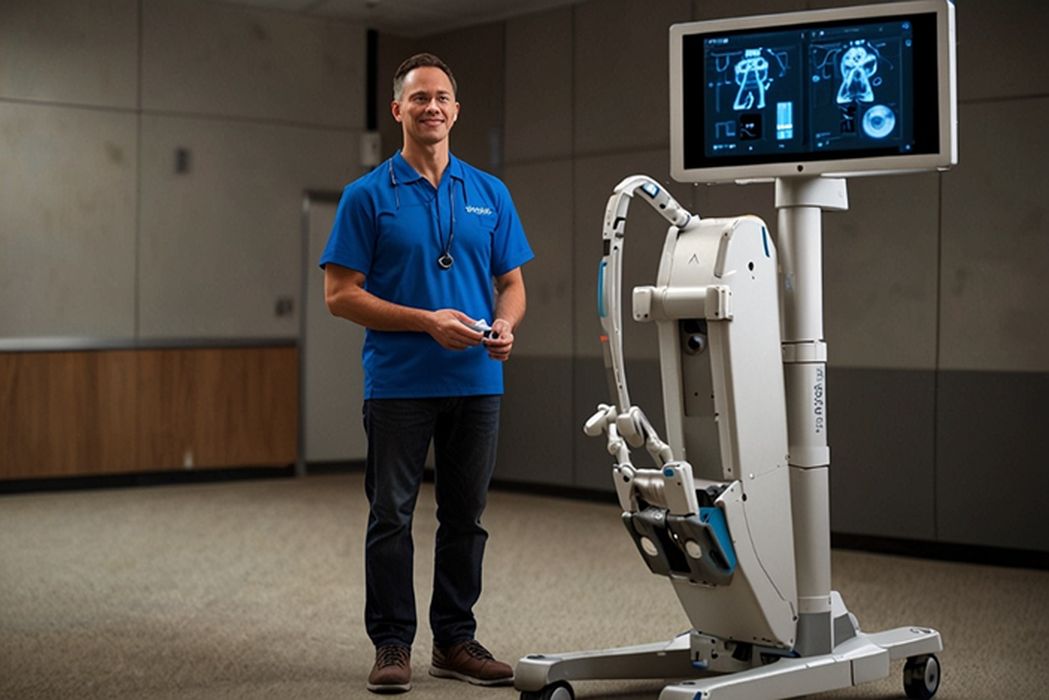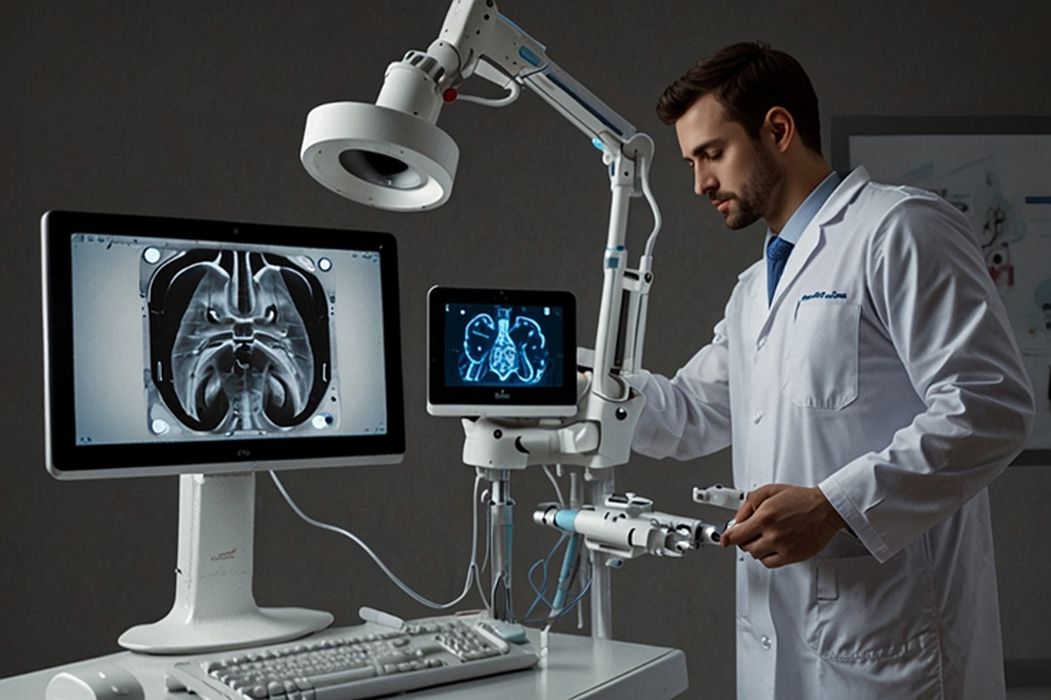
Charles R. Goulding and Preeti Sulibhavi analyze how the FDA clearance of Intuitive Surgical’s new DaVinci system is set to revolutionize soft tissue robotic surgery.
After a decade of intensive research and development, Intuitive Surgical has achieved a significant milestone with the FDA 510(k) clearance for its 5th generation DaVinci software tissue robot. This groundbreaking advancement is poised to ignite a fierce competitive race among industry giants like Intuitive Surgical, Medtronic, and Johnson & Johnson, as they vie for a share of the lucrative soft tissue robotic surgery market.
The benefits of soft tissue robotic surgeries are numerous and far-reaching. These cutting-edge procedures offer a minimally invasive approach, resulting in smaller incisions, reduced blood loss, and shorter recovery times for patients. Additionally, the enhanced precision and dexterity provided by robotic systems allow surgeons to perform complex operations with unprecedented accuracy, minimizing the risk of complications and improving overall patient outcomes.
At the heart of this technological revolution lies the seamless integration of surgical robots with a wide array of 3D printing applications. These two pioneering technologies have formed a powerful synergy, propelling the field of medical innovation to new heights.

Intuitive Surgical: Pioneers of Robotic Surgery
Intuitive Surgical, the company behind the renowned da Vinci Surgical System, has been at the forefront of robotic surgery for over two decades. With the recent FDA approval of their 5th generation da Vinci software tissue robot, they have solidified their position as industry leaders.
One of the key applications of 3D printing in Intuitive Surgical’s arsenal is the creation of patient-specific anatomical models. These highly detailed 3D printed replicas allow surgeons to meticulously plan and rehearse complex procedures, reducing operating times and enhancing surgical outcomes.
Intuitive Surgical has also embraced the use of 3D printed surgical instruments and implants, tailored to each patient’s unique anatomy. These customized tools and devices enable precise fit and optimized functionality, improving the overall efficacy of robotic surgical procedures.
Medtronic: Innovators in Spine and Orthopedic Robotics
Medtronic, a global leader in medical technology, has made significant strides in the field of robotic-assisted spine and orthopedic surgeries. With their cutting-edge robotic platforms, such as the Mazor Robotic Guidance System and the ROSA® Knee System, Medtronic is revolutionizing these intricate surgical procedures.
In collaboration with 3D printing companies, Medtronic has developed advanced patient-matched solutions for spinal implants and orthopedic devices. These 3D printed implants are meticulously designed to conform to each patient’s unique anatomy, improving surgical precision and long-term outcomes.
Additionally, Medtronic has leveraged 3D printing technology to create highly accurate surgical guides and templates, enabling surgeons to execute complex procedures with enhanced accuracy and efficiency.

Johnson & Johnson: Pioneers in Orthopedic and Neurosurgical Robotics
Johnson & Johnson (J&J), a healthcare conglomerate with a strong presence in medical devices, has made significant investments in robotic-assisted orthopedic and neurosurgical procedures. Their flagship robotic platforms, such as the NAVIO™ Surgical System and the IONICTM Robotic-Assisted Bronchoscopy platform, are a testament to their commitment to advancing minimally invasive surgical techniques.
In the realm of orthopedics, Johnson & Johnson has embraced 3D printing technology to create customized implants and surgical guides tailored to each patient’s unique anatomy. These patient-specific solutions not only improve surgical outcomes but also reduce procedural complexities and operating times.
Moreover, Johnson & Johnson has leveraged 3D printing to develop advanced training models and simulation tools, enabling surgeons to practice intricate procedures in a safe and controlled environment before performing actual operations.
The Future: Convergence of Robotics and 3D Printing
As the field of robotic surgery continues to evolve, the synergy between surgical robots and 3D printing technology is poised to unlock unprecedented possibilities. The ability to create patient-specific anatomical models, customized implants, and tailored surgical instruments promises a future where personalized medicine becomes the norm.
This convergence also holds the potential to revolutionize surgical training and education. 3D printed simulation models and virtual reality environments integrated with robotic systems will enable surgeons to hone their skills in a highly realistic and immersive setting, ultimately improving patient safety and surgical outcomes.
Moreover, the integration of advanced imaging techniques, such as 3D scanning and computer-aided design, with 3D printing and robotic surgery will further enhance surgical planning and execution, enabling surgeons to navigate complex anatomical structures with unprecedented accuracy.
The Research & Development Tax Credit
The now permanent Research and Development (R&D) Tax Credit is available for companies developing new or improved products, processes and/or software.
3D printing can help boost a company’s R&D Tax Credits. Wages for technical employees creating, testing and revising 3D printed prototypes can be included as a percentage of eligible time spent for the R&D Tax Credit. Similarly, when used as a method of improving a process, time spent integrating 3D printing hardware and software counts as an eligible activity. Lastly, when used for modeling and preproduction, the costs of filaments consumed during the development process may also be recovered.
Whether it is used for creating and testing prototypes or for final production, 3D printing is a great indicator that R&D Credit-eligible activities are taking place. Companies implementing this technology at any point should consider taking advantage of R&D Tax Credits.
Conclusion
As Intuitive Surgical, Medtronic, and Johnson & Johnson continue to push the boundaries of innovation, the future of robotic surgery and 3D printing applications promises to be a transformative journey, reshaping the landscape of healthcare and improving the lives of countless patients worldwide.
